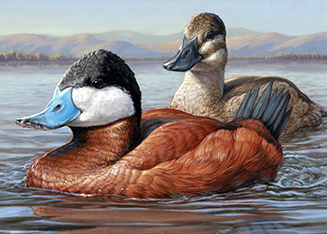Disease
What is the issue?
Wildlife diseases have affected North American migratory bird populations for many decades. These include avian botulism, avian influenza avian cholera and West Nile virus.
Why does this happen?
Healthy wildlife populations have great resilience in the face of infectious diseases. However, when resilience is diminished by stress, wildlife populations begin losing their ability to counteract the impacts of disease and can hasten death. Other stressors for bird populations include habitat impacts; poor water quality and diminishing water availability; environmental contaminants; invasive species; illegal trade in wildlife; climate change; and loss of genetic diversity and biodiversity.
What are some solutions?
Disease management in wildlife is challenging; once a disease has become established in a free-ranging wildlife population, few options are available for management. Controlling disease in wildlife is difficult and expensive. Therefore, prevention is critical. Preventive measures include:
- reducing interactions between humans, domestic animals, and wildlife; and
- minimizing or eliminating unnatural or artificial situations such as translocating free-ranging wildlife, feeding and baiting wildlife, and maintaining impoundments or ponds that have poor water quality.
For further information regarding bird and other wildlife health and disease issues, please contact the Service’s Wildlife Health Office.


